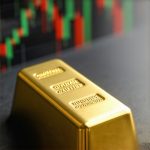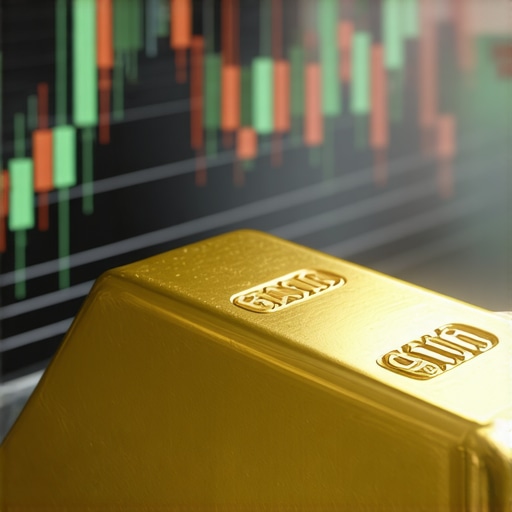Introduction to Gold Demand Trends
In today’s volatile financial landscape, understanding gold demand trends is crucial for investors and traders alike. Gold has long been regarded as a safe-haven asset, especially during times of economic uncertainty. Its intrinsic value, liquidity, and ability to act as a hedge against inflation make it a preferred choice for many. In this article, we will delve into the current trends influencing gold demand and explore the factors driving these changes.
The Current Landscape of Gold Demand
As of 2023, several key factors are shaping the demand for gold. Firstly, geopolitical tensions and economic instability across various regions have led to an increase in gold purchases. Investors are seeking stability in gold as a protective measure against potential market downturns. Additionally, rising inflation rates globally have prompted individuals and institutions to allocate more resources into precious metals to preserve their wealth.
Central Bank Purchases
Central banks play a significant role in influencing gold demand trends. In recent years, many central banks have increased their gold reserves as a strategy to diversify their assets and reduce reliance on traditional fiat currencies. This trend highlights gold’s enduring appeal as a strategic asset, further solidifying its status in the global financial system. The impact of these purchases can be profound, as they can significantly affect market prices and investor sentiment.
Investment in Gold ETFs
The rise of gold exchange-traded funds (ETFs) has also transformed how investors access this precious metal. Gold ETFs allow investors to gain exposure to gold without the need to physically own the metal. This method of investment has gained popularity due to its convenience and liquidity. As more investors turn to gold ETFs, the overall demand for gold continues to rise, reflecting a shift in investment strategies towards more diversified and accessible options.
Global Economic Factors
Another critical aspect of gold demand trends relates to global economic conditions. Factors such as the strength of the U.S. dollar, interest rates, and economic growth projections all play pivotal roles in determining the attractiveness of gold as an investment. For instance, when interest rates are low, gold becomes more appealing since the opportunity cost of holding non-yielding assets decreases. Conversely, a strong dollar may dampen gold demand as it becomes more expensive for foreign investors.
Conclusion
In conclusion, understanding gold demand trends today requires a comprehensive analysis of various economic, geopolitical, and market factors. Whether you are an experienced investor or a newcomer to the gold market, staying informed about these dynamics is essential for making informed investment decisions. For those looking to deepen their understanding, exploring resources like analyzing gold demand trends can provide valuable insights into strategies that align with current market conditions.
The Role of Geopolitical Events in Gold Demand
Geopolitical events significantly impact gold demand, often leading to increased purchases as investors seek refuge from uncertainty. Political instability, trade wars, and military conflicts can drive gold prices upward, making it a sought-after asset. Understanding how these events influence market sentiment is crucial for investors looking to navigate the complexities of gold investing. For instance, during times of conflict, gold often experiences spikes in demand due to its perceived stability.
Market Reactions to Economic Policies
Economic policies enacted by governments and central banks can also affect gold demand. Decisions regarding interest rates, quantitative easing, and fiscal stimulus can create volatility in financial markets, prompting investors to turn to gold as a hedge against potential downturns. Monitoring these policies and their implications can help investors anticipate changes in gold demand and make informed decisions regarding their investment strategies.
Technological Advancements in Gold Trading
Technological advancements have revolutionized how investors engage with gold markets. Online trading platforms and mobile applications have made it easier for individuals to buy and sell gold. These advancements not only increase access but also enhance liquidity in the market. As more investors adopt these technologies, the demand for gold can increase, reflecting a shift in how gold is perceived as an investment vehicle. The convenience of trading gold ETFs or digital gold has opened new avenues for investors, driving up overall demand.
Gold Demand Trends in Emerging Markets
Emerging markets are playing an increasingly vital role in global gold demand. Countries like India and China have historically been major consumers of gold, primarily due to cultural significance and investment preferences. As these economies continue to grow, their demand for gold is expected to rise, further influencing global market dynamics. Investors should keep an eye on these markets for potential growth opportunities in gold investments.
Investment Strategies for Gold in Emerging Markets
Investing in gold within emerging markets can be lucrative, but it requires a nuanced understanding of local market conditions and consumer behavior. Strategies such as investing in gold mining stocks or gold ETFs tailored to these regions can provide exposure while mitigating risks associated with volatility. Exploring options like investing in gold mining stocks can help investors capitalize on these emerging trends.
Long-term Predictions for Gold Demand
Looking ahead, the long-term predictions for gold demand remain optimistic. Factors such as ongoing economic uncertainty, potential inflationary pressures, and the continued relevance of gold as a hedge against market fluctuations suggest that gold will maintain its status as a critical asset. Investors who incorporate gold into their portfolios can benefit from its stability and potential for capital appreciation as market conditions evolve.
Preparing for Future Trends in Gold Investment
As the market evolves, staying informed about future trends in gold investment is essential. Engaging with resources that provide insights on gold price forecasts can help investors refine their strategies and align their portfolios with anticipated market shifts. By understanding the underlying factors driving gold demand, investors can make well-informed decisions that enhance their investment outcomes.
In conclusion, analyzing gold demand trends requires a multifaceted approach that considers geopolitical events, economic policies, technological advancements, and emerging market dynamics. Investors who stay abreast of these trends are better positioned to navigate the complexities of the gold market and capitalize on opportunities as they arise.
Global Economic Factors Influencing Gold Demand
The demand for gold is intricately tied to global economic conditions. Factors such as inflation rates, currency fluctuations, and interest rate changes can significantly influence investor behavior. During periods of economic instability, gold often serves as a safe haven, leading to increased purchases. Investors should monitor global economic indicators to anticipate shifts in demand and adjust their strategies accordingly.
Inflation and Its Impact on Gold Prices
Inflation is a critical factor driving gold demand. As the purchasing power of currency decreases, many investors turn to gold as a hedge against inflation. Historical data shows that during inflationary periods, gold prices tend to rise as people seek to preserve their wealth. For those considering investing in gold, understanding the relationship between inflation and gold prices is essential for making informed decisions.
Currency Fluctuations and Gold’s Appeal
The value of the US dollar plays a significant role in gold pricing. A weaker dollar often leads to higher gold prices, as it becomes more affordable for investors using other currencies. Monitoring currency trends can provide insights into potential gold price movements. Investors looking to maximize their returns should consider diversifying their portfolios by including assets that respond favorably to currency fluctuations.
Gold Investment Strategies in a Changing Market
With the gold market continuously evolving, investors must adopt strategies that align with current trends. Diversifying investments across different types of gold assets, such as ETFs, mining stocks, and physical gold, can mitigate risks and enhance potential returns. Understanding the nuances of each investment vehicle is crucial for developing a robust investment strategy.
Utilizing Gold ETFs for Flexible Investment
Gold exchange-traded funds (ETFs) offer investors an efficient way to gain exposure to gold without the need for physical storage. These funds track the price of gold and provide liquidity, making them an attractive option for both novice and experienced investors. Learning how to effectively utilize gold ETFs can enhance portfolio performance while allowing flexibility in investment strategies.
Assessing Gold Mining Stocks: Opportunities and Risks
Investing in gold mining stocks can offer significant opportunities for growth, but it also comes with risks associated with operational challenges and market volatility. Analyzing the financial health of mining companies and understanding the factors that affect their performance is essential for making informed investment choices. For insights on investing in gold mining stocks, consider factors such as production costs, geopolitical risks, and market demand for gold.
Understanding Market Sentiment and Gold Demand
Market sentiment plays a crucial role in driving gold demand. Factors such as consumer confidence, geopolitical tensions, and overall economic outlook can influence how investors perceive gold as an asset. By gauging market sentiment, investors can make strategic decisions that align with prevailing trends.
Sentiment Analysis Techniques for Gold Investors
Utilizing sentiment analysis techniques can provide valuable insights into market trends. Tools that track online discussions, news articles, and social media can help investors understand public perception of gold and its potential trajectory. By staying informed about market sentiment, investors can position themselves to capitalize on emerging opportunities.
Conclusion: Adapting to the Future of Gold Demand
In summary, navigating the complexities of gold demand requires a comprehensive understanding of various factors, including economic conditions, investment strategies, and market sentiment. Investors who remain vigilant and adaptable are better positioned to thrive in the ever-changing landscape of gold investing. By incorporating diverse insights and strategies, one can enhance their potential for success in the gold market.
Emerging Trends in Gold Investment
As the gold market evolves, several emerging trends are shaping the future of gold demand. Understanding these trends is essential for investors looking to navigate the complexities of the gold landscape. Factors such as technological advancements, changing consumer preferences, and environmental considerations are influencing how gold is perceived and invested in. Keeping abreast of these developments can help investors align their strategies with market expectations.
Technological Innovations Impacting Gold Mining
Technological advances are revolutionizing gold mining operations, enhancing efficiency, and reducing costs. Innovations such as automation, artificial intelligence, and improved extraction techniques are making it possible to mine gold more sustainably and profitably. Investors should pay attention to mining companies that adopt these technologies, as they may offer better investment opportunities. For insights on gold mining stocks, consider how technological advancements can influence production and profitability.
Consumer Preferences and Ethical Gold Investments
Today’s investors are increasingly concerned about the ethical implications of their investments. The demand for ethically sourced gold is on the rise, as consumers become more aware of the environmental and social impacts of gold mining. Investors should consider companies that prioritize sustainable practices and ethical sourcing, as these factors can enhance brand reputation and drive demand. Understanding the importance of ethical gold investments is crucial for making informed decisions in a socially conscious market.
Global Market Dynamics and Their Influence on Gold Prices
Global market dynamics play a significant role in shaping gold prices. Factors such as geopolitical tensions, trade agreements, and shifts in global economic power can create volatility in the gold market. Investors must stay informed about these dynamics to effectively adjust their strategies. Moreover, understanding how gold prices correlate with major global events can provide valuable insights for anticipating market movements.
Geopolitical Tensions and Gold as a Safe Haven
During times of geopolitical uncertainty, gold often acts as a safe haven asset. Investors flock to gold as a protective measure against market instability and currency fluctuations. Recent events, such as trade wars and political unrest, have reinforced gold’s status as a reliable investment. Monitoring global events and their potential impact on gold prices is essential for investors seeking to capitalize on market shifts.
Trade Agreements and Their Impact on Gold Demand
Trade agreements and economic partnerships can significantly affect gold demand. Changes in tariffs, import/export regulations, and international relations can influence how gold is traded globally. Investors should pay attention to these agreements, as they can create opportunities for investment and affect gold pricing trends. Understanding the nuances of international trade can enhance an investor’s ability to make strategic decisions in the gold market.
Conclusion: Preparing for the Future of Gold Investing
In conclusion, the future of gold demand is shaped by a myriad of factors, including technological innovations, ethical considerations, and global market dynamics. Investors who remain proactive and informed will be better equipped to navigate the gold market successfully. By embracing emerging trends and understanding market influences, one can optimize their investment strategy and maximize potential returns in the evolving landscape of gold investing.
Frequently Asked Questions About Gold Investment
1. Why is gold considered a safe haven investment?
Gold is considered a safe haven investment because it tends to retain its value during times of economic uncertainty and global instability. Investors flock to gold when they fear inflation, currency fluctuations, or geopolitical tensions, as it often provides a hedge against market volatility.
2. How do technological advancements affect gold mining?
Technological advancements improve efficiency in gold mining operations, leading to lower production costs and less environmental impact. Innovations such as automation and artificial intelligence enhance productivity, creating potentially more profitable opportunities for investors in mining companies.
3. What role does ethical sourcing play in gold investments?
Ethical sourcing has become increasingly important to investors concerned about social and environmental impacts. Companies that prioritize sustainable practices and ethical sourcing are often viewed more favorably, potentially leading to increased demand for their products and higher investment returns.
4. How do global economic conditions influence gold prices?
Global economic conditions, such as inflation rates, interest rates, and currency strength, significantly influence gold prices. Investors must monitor these factors, as changes can lead to fluctuations in gold demand and pricing trends, impacting investment strategies.
5. What impact do trade agreements have on gold demand?
Trade agreements can affect gold demand through changes in tariffs and international regulations. Favorable trade relations can enhance the ease of gold transactions, increasing demand and potentially driving up prices, making it essential for investors to stay informed about global trade dynamics.
6. How can investors prepare for future gold market trends?
Investors can prepare for future trends by staying informed about technological innovations, ethical considerations, and global market dynamics. Engaging with industry news, following market reports, and understanding consumer preferences can help shape effective investment strategies.
7. What are some indicators of gold market volatility?
Indicators of gold market volatility include geopolitical tensions, economic data releases, changes in interest rates, and stock market performance. Monitoring these factors can provide insights into potential price movements and investment opportunities within the gold market.
8. Is gold a good long-term investment?
Gold is often regarded as a good long-term investment due to its historical ability to preserve value. While it may not provide regular income like stocks or bonds, it serves as an effective hedge against inflation and economic downturns, making it a valuable addition to a diversified portfolio.
9. How can I invest in gold?
There are several ways to invest in gold, including purchasing physical gold (jewelry, coins, bars), investing in gold ETFs (exchange-traded funds), or buying shares in gold mining companies. Each method carries different risks and advantages, so it’s essential to consider your investment goals and risk tolerance.
10. What are the risks associated with gold investment?
Risks associated with gold investment include market volatility, changes in demand, geopolitical instability, and potential fluctuations in the value of the U.S. dollar. Investors should conduct thorough research and consider diversifying their portfolios to mitigate these risks.
Authority Resources for Gold Investment
For investors seeking reliable information and expert insights on gold investment, consider the following authoritative resources:
- Kitco – A trusted source for gold market news, prices, and analysis.
- World Gold Council – Provides comprehensive information on gold demand, investment trends, and the gold market.
- BullionVault – Offers insights on buying, selling, and investing in physical gold and silver.
- Investing.com – Features market data, news, and analysis on commodities, including gold.
- Forbes – Gold Section – Publishes articles and insights on gold investment strategies and market trends.
Conclusion: Embracing the Future of Gold Investment
In summary, understanding the emerging trends and global market dynamics that influence gold demand is vital for successful investment strategies. With technological innovations, ethical considerations, and geopolitical factors all playing significant roles, investors must remain proactive and informed. By leveraging the insights shared in this article, individuals can optimize their gold investment strategies and navigate the evolving landscape effectively. As the market continues to change, staying ahead of the trends will ensure investors can maximize their potential returns in gold investment.










